Educational and Reference Resources of the Tri-Canyons
Ecology on the Trail: Niche
Niche
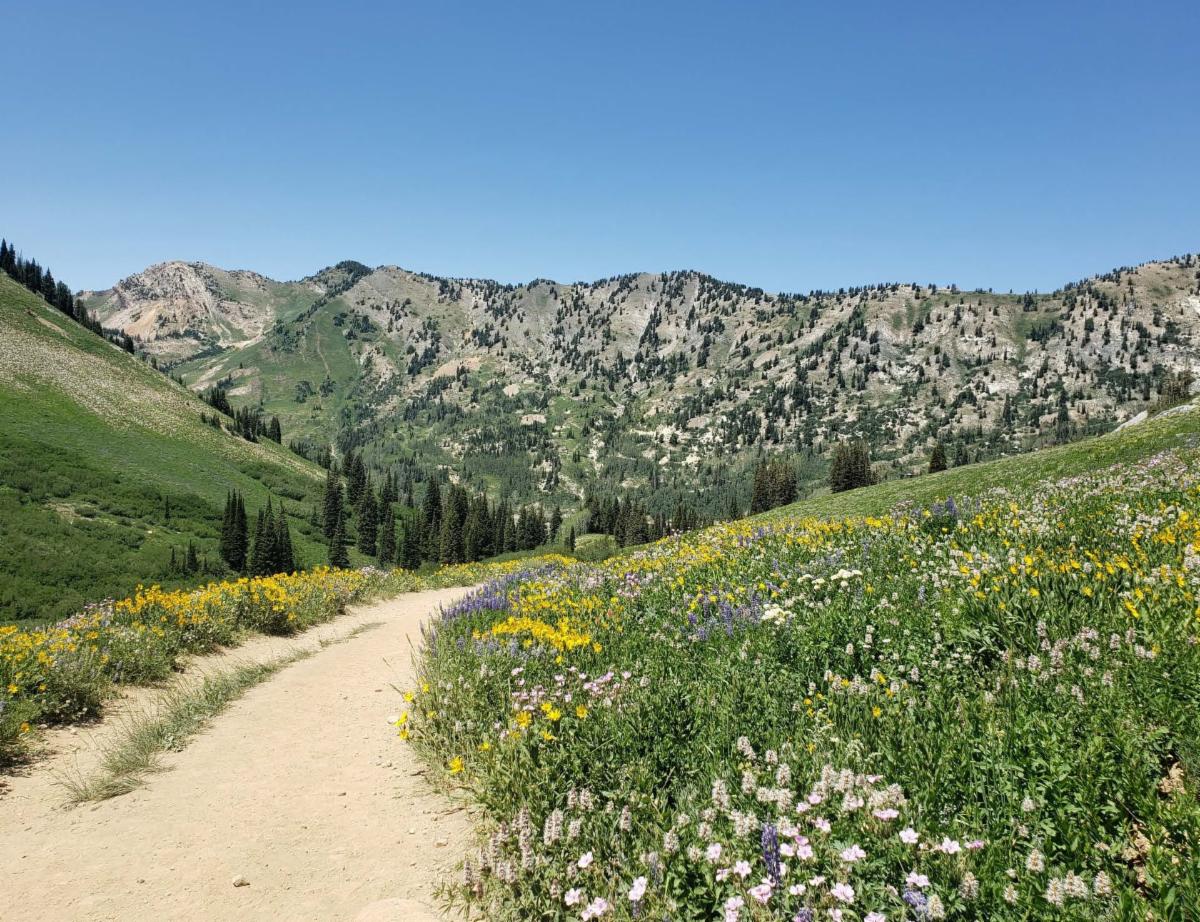 For this article’s tour, we are heading to Alta and narrowing our scope to learn about niches! Before we begin, we have to talk about the word “niche”. You can pronounce it either as “neesh” or “nitch”, both ways are considered correct so you can choose whichever feels best for you.
For this article’s tour, we are heading to Alta and narrowing our scope to learn about niches! Before we begin, we have to talk about the word “niche”. You can pronounce it either as “neesh” or “nitch”, both ways are considered correct so you can choose whichever feels best for you.
When we’re out in nature, we like to use our senses to observe the world around us. When you’re out in nature, listen closely to the natural sounds all around you. Birds, squirrels, and chipmunks are all noisy tenants of the forest. Run your fingers along the grooved bark of a tree or the jagged edges of a rock. Smell a wildflower or the needles of a conifer tree. Perhaps even try smelling the bark; we do have one type of tree that smells like butterscotch! However, the one sense we do not use when we’re in nature is our sense of taste. Please do not taste anything you find in the canyons, as certain plants can make you sick! All ages can benefit from a tangible connection to nature, so adults should feel free to take advantage of using their senses too!
← Look for this Earth Icon to easily locate activities or bonus tips.
While we are using our senses to heighten our nature experience, please remember that we are in a no collecting space. Everything that is in the forest when you visit needs to stay in the forest. From the sweet smelling flower to the cool rock you found on the trail, please do not take anything home with you. Instead, you can take home pictures, drawings, notes, or just the memories you made during a great day on the trails.
Teacher Supplements
Teacher Presentation
Student Guide
Map – Lower Albion Meadows Trail (Barb’s Trail)
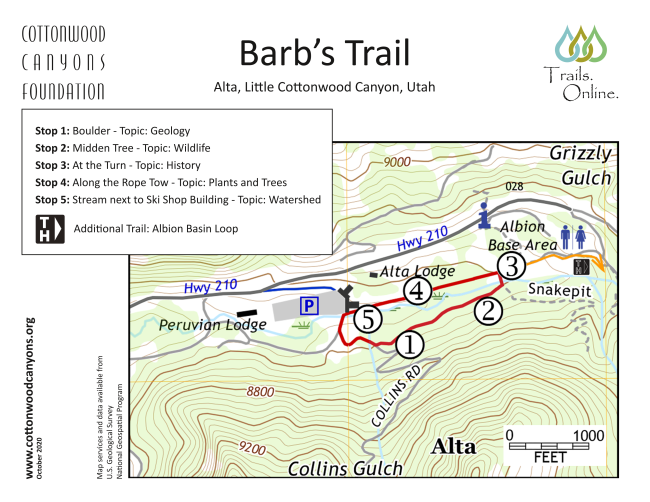
Trail: Lower Albion Meadows Trail (Loop) — Barb’s Trail
Directions: This trail is best accessed from Wildcat Base at Alta Ski Area in Little Cottonwood Canyon. There is a portable toilet located in the parking lot. From the parking lot, take the trail up the ski slope past the Skier Services Building and the bottom of the Wildcat Chair Lift. Stay left and follow the lower trail parallel to the rope tow. After hiking for 0.5 miles, you’ll veer left and head back to the parking lot along the rope tow to complete your loop.
Trail Information: Lower Albion Meadows Trail is 1 mile round-trip, with an elevation gain of 100 feet.
Additional Trails: If you are hoping for a longer day out on the trails, we recommend the Upper Albion Meadows trail that takes you through Albion Basin. This trail is accessed from the Albion Base Area, which is just further along the rope tow if you head east. Remember this trail for next summer when the Albion Basin wildflowers are in full bloom! This trail is 2.8 miles round-trip with an elevation gain of 1,100 feet. Looking for an even longer trek? From Albion Basin you can head up to Cecret Lake. In other articles, we talked about the boreal toads at Silver Lake, but if you make it up to Cecret Lake there’s another special amphibian who lives there! Tiger Salamanders can be found in Cecret Lake, but remember to use only your eyes to appreciate this animal. The trail up to Cecret Lake is an additional 1.5 miles round-trip, with an elevation gain of 420 feet.
Pre-Activity – Niches
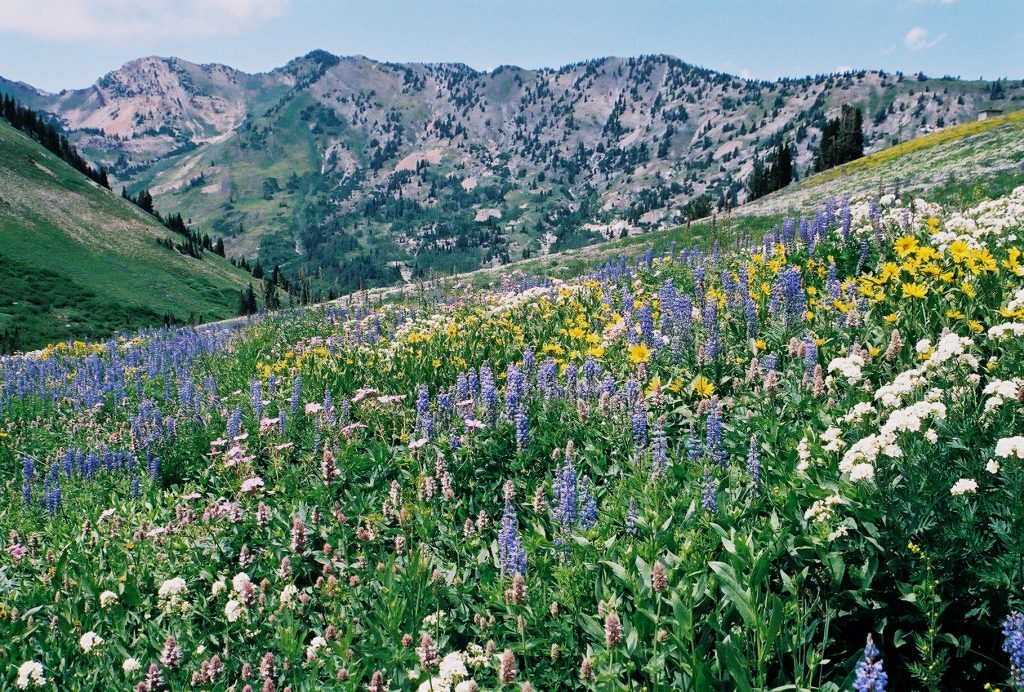 A niche is the role that each living thing has in the community where it lives. Remember that an ecosystem (a community of living and nonliving things that interact) is like your neighborhood, and a habitat (the place where something lives) is like your house. Your niche would be your role in your house. This would include what you do, what you eat, what chores you do, and how you get along with others in your household. The role that you play in your home is your niche. Describe your niche. Do you help with the dishes? Do you take the garbage out? Are you the oldest sibling? The youngest sibling? All of the things you do in your home is your role or your niche.
A niche is the role that each living thing has in the community where it lives. Remember that an ecosystem (a community of living and nonliving things that interact) is like your neighborhood, and a habitat (the place where something lives) is like your house. Your niche would be your role in your house. This would include what you do, what you eat, what chores you do, and how you get along with others in your household. The role that you play in your home is your niche. Describe your niche. Do you help with the dishes? Do you take the garbage out? Are you the oldest sibling? The youngest sibling? All of the things you do in your home is your role or your niche.
Stop One – Boulder
Topic: Geology
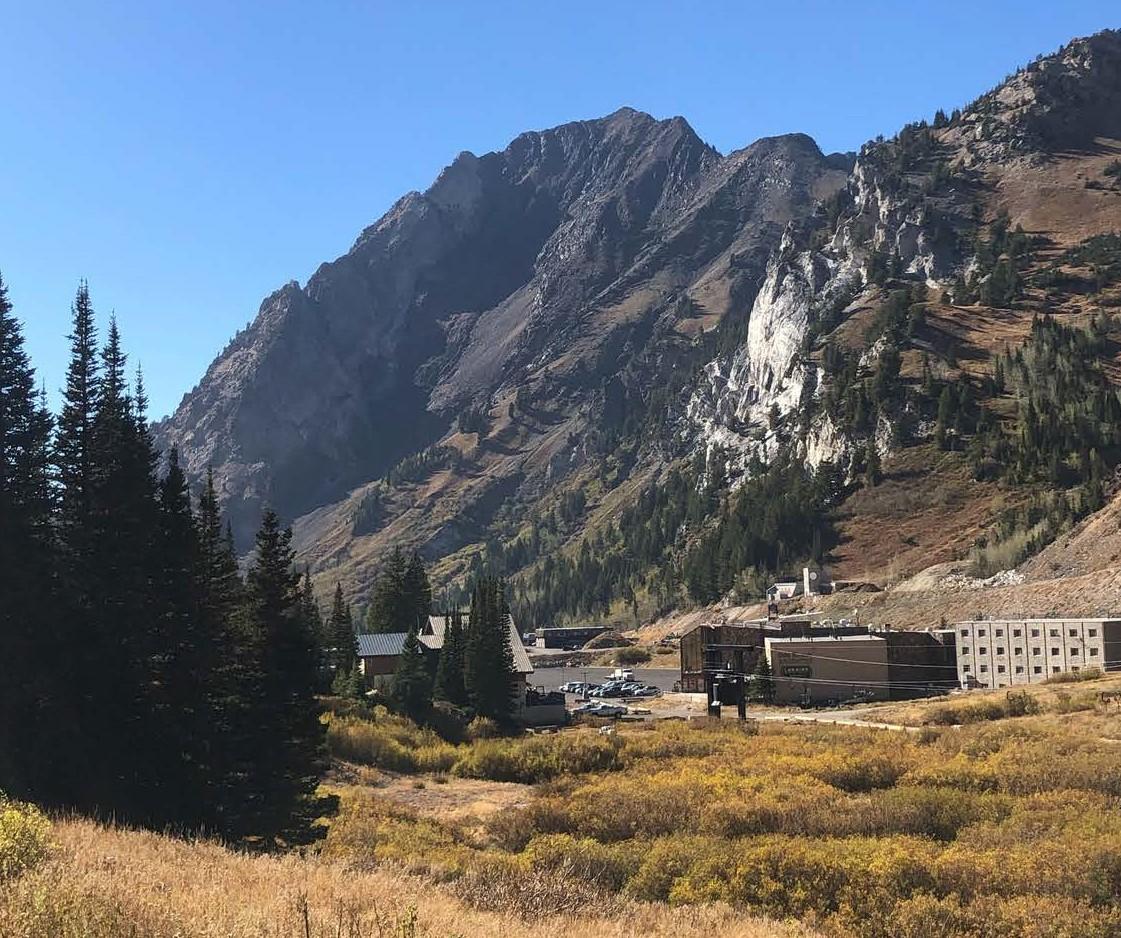 In other articles, we learned that canyons can be formed by liquid water and frozen water. Big Cottonwood Canyon was half-formed by a glacier, and half-formed by liquid water. Here in Little Cottonwood, the canyon was formed only by a glacier that reached all the way down to the valley! Do you remember if glaciers create a “U” or a “V” shaped canyon? (The answer is “U” shaped). How do you think a glacier forms? Glaciers form over many years in locations where there is snow year-round. As the snow builds up, the pressure from the snow on the top layers causes the snow in the lower layers to become more tightly packed, eventually forming ice. This process takes many, many years.
In other articles, we learned that canyons can be formed by liquid water and frozen water. Big Cottonwood Canyon was half-formed by a glacier, and half-formed by liquid water. Here in Little Cottonwood, the canyon was formed only by a glacier that reached all the way down to the valley! Do you remember if glaciers create a “U” or a “V” shaped canyon? (The answer is “U” shaped). How do you think a glacier forms? Glaciers form over many years in locations where there is snow year-round. As the snow builds up, the pressure from the snow on the top layers causes the snow in the lower layers to become more tightly packed, eventually forming ice. This process takes many, many years.
Bonus: When do you think the canyons had glaciers? The answer: 10,000 to 30,000 years ago!
Try this Glacier Goo activity to investigate how glaciers move!
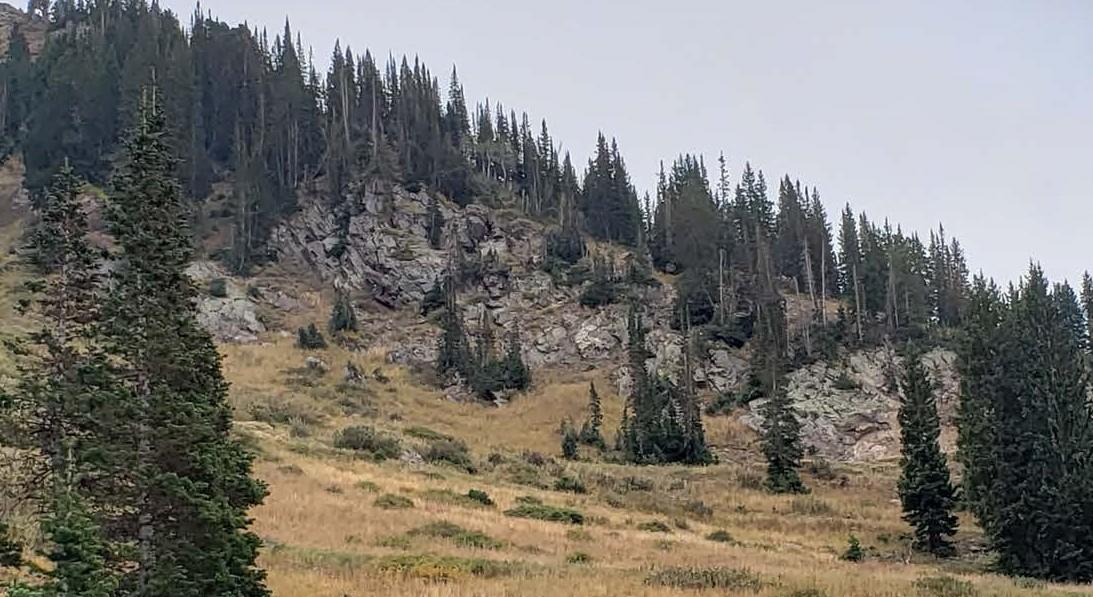 Remember back to our article on habitats, we mentioned there can be habitats of all sizes. Here we are going to explore a small habitat and how one creature’s niche uses this tiny, hard to reach space! From this location on the trail look around you and make some observations about the rock formations and rocky hillsides. Do you see any signs of life in these exposed rock faces?
Remember back to our article on habitats, we mentioned there can be habitats of all sizes. Here we are going to explore a small habitat and how one creature’s niche uses this tiny, hard to reach space! From this location on the trail look around you and make some observations about the rock formations and rocky hillsides. Do you see any signs of life in these exposed rock faces?
High in our canyons, the Clark’s Nutcracker lives in some of the harshest, most rugged conditions, surviving high winds, snow, and very little cover in these steep rocky slopes. By storing limber pine seeds in glacial remnants, rocky hillsides, and tiny cracks in rock faces, they are able to survive for the winter. In return, they fill an important role in helping plant limber pine trees! When these birds leave behind a few seeds, they help the limber pine disperse its seeds into the soil type they grow best in. Though the side of a rocky cliff may seem like an unusual place for a tree to grow, what might make these glacially carved areas a good place to live?
Bonus: The geology of these canyons is old, and so are limber pines. In fact, one of the oldest known limber pines can be found here at Alta. In 2006, a BYU student and his professor discovered a tree they named Twister. This specific tree is at least 1,700 years old! It is suspected that the tree is even closer to 2,000 years old, but we cannot be certain since the center of the wood of the tree has rotted.
For more information, check out this Article About a Tree Named Twister.
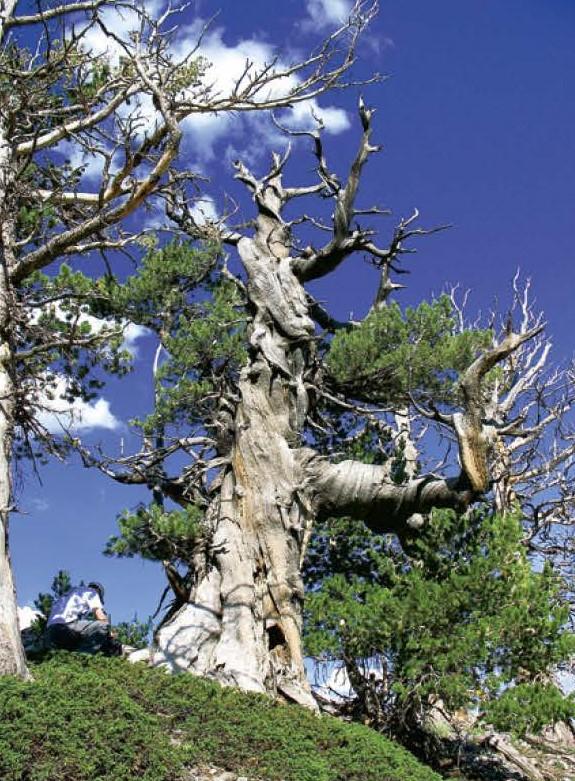
Stop Two – Midden Tree
Topic: Wildlife
 What do you notice around the base of this tree? What do these pieces look like? Where do you think they are from? What you are looking at are the individual scales of a cone from a conifer tree! Most people call them pinecones, but there are spruce cones from spruce trees and fir cones from fir trees, too! What creature do you think is doing this? Why are they doing this? This pile was left behind by squirrels. They peel off each scale to reveal a seed, which they then eat. The scales are considered trash so they throw them to the ground. Over time, a midden forms (a midden is a fancy word for a trash pile). This tells us that a squirrel (or maybe a few squirrels), likes to eat while sitting in this particular tree!
What do you notice around the base of this tree? What do these pieces look like? Where do you think they are from? What you are looking at are the individual scales of a cone from a conifer tree! Most people call them pinecones, but there are spruce cones from spruce trees and fir cones from fir trees, too! What creature do you think is doing this? Why are they doing this? This pile was left behind by squirrels. They peel off each scale to reveal a seed, which they then eat. The scales are considered trash so they throw them to the ground. Over time, a midden forms (a midden is a fancy word for a trash pile). This tells us that a squirrel (or maybe a few squirrels), likes to eat while sitting in this particular tree!
Bonus: But, what role does a squirrel being messy play? By leaving behind these middens and sometimes storing cones there for the winter, they set up the perfect conditions to help these conifers grow. The trash they leave behind acts like a mulch that you might use in your garden. As the cone litter on top helps hold moisture, the decaying plant material below turns into soil where any leftover seeds can begin to sprout.
We mentioned decaying plant material; does this happen all on its own? No! Decomposers help fill this niche by helping break down all of this material. Fungi and bacteria are common decomposers, but can you think of another decomposer you might see in a garden or in your yard?
One tree can provide a habitat for many different species, which means there might be many niches to be filled. As you look at the tree, how many different animals could call this their home? What role do they play in keeping this place, their habitat, healthy? Can they do it alone or do they need help? Up at Alta, there are several different creatures who could call this tree home beside the squirrel, such as a porcupine and a variety of birds. What niche do you think these creatures could fill?
Answers: Porcupines help till the soil and birds help with seed dispersal!
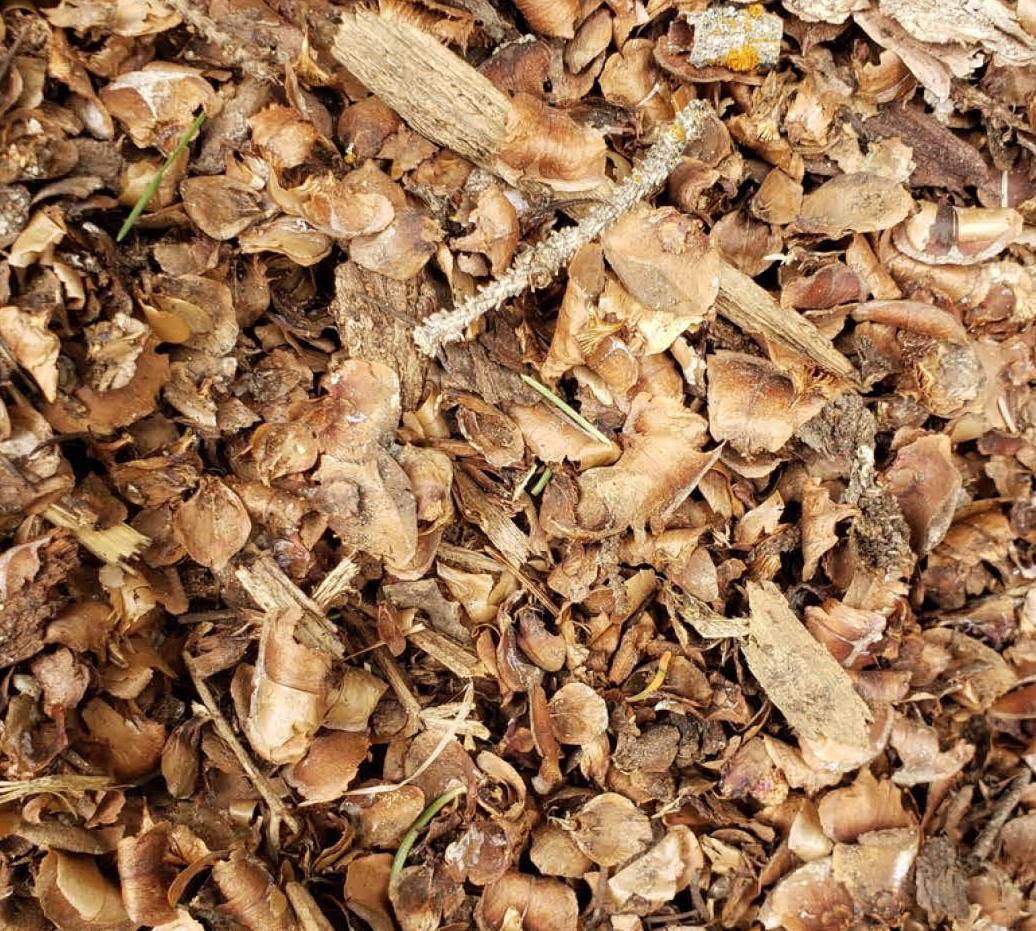
Stop Three – At the Turn
Topic: History and Human Use
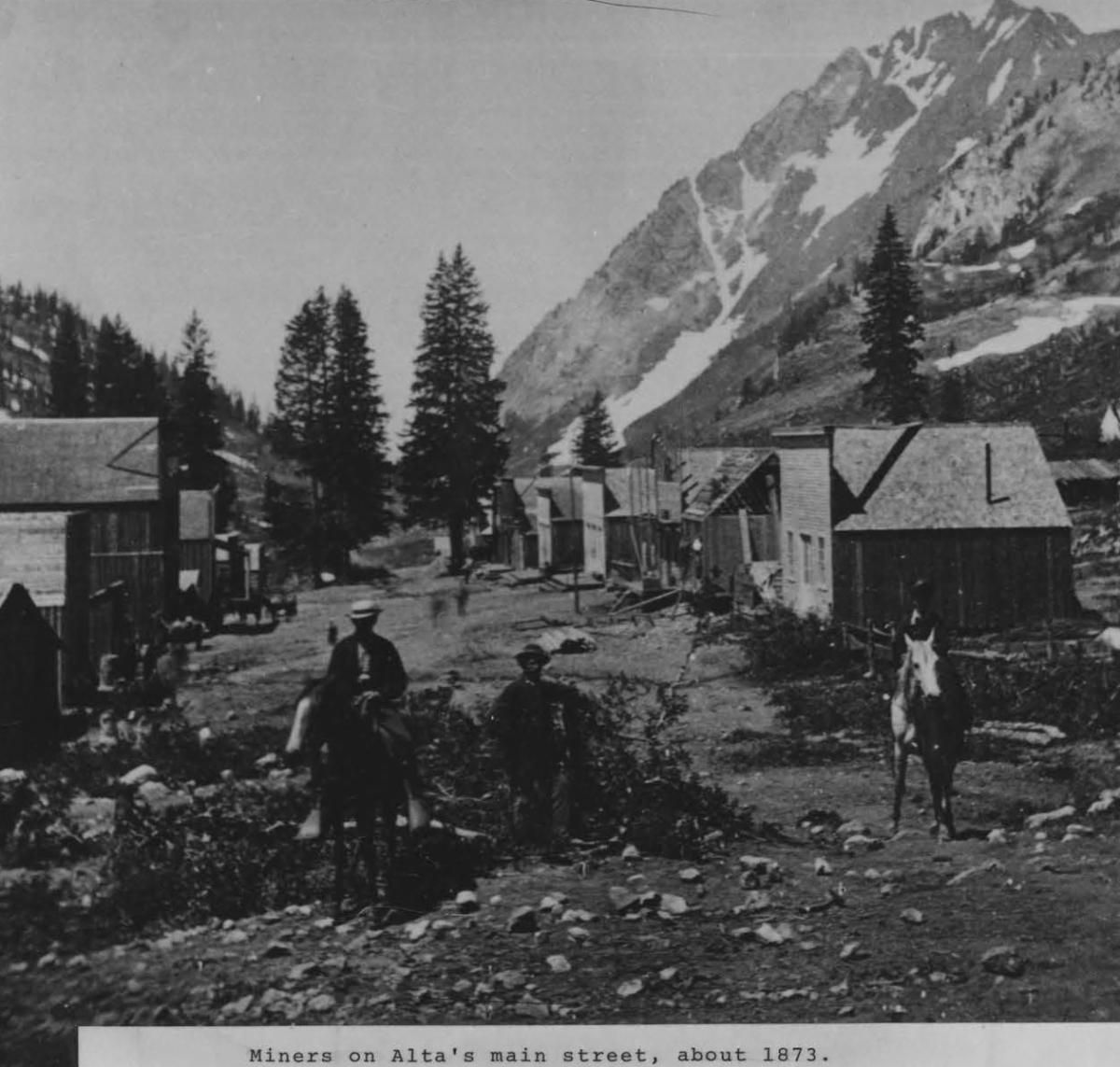 This stretch of rope tow was once the Main Street of a bustling mining town here at Alta. As you look down the canyon from this point, close your eyes and imagine. It’s 1873 and you are a miner, covered in dirt and sweat, and you are walking home down Main Street at the end of a long day. What do you see? How do you feel? Try to picture the people and the buildings that once lined this dirt road. To be a miner you had to be tough! And, to be a miner at Alta, you had to be even tougher! This environment was not a place made for people to survive, and nature proved it by destroying the town on several occasions with powerful avalanches and a fire. If people were going to survive they needed to find or create their own niche. If you were living in the town of Alta back then, what role would you try to fill? A builder? Firefighter? Snow scientist?
This stretch of rope tow was once the Main Street of a bustling mining town here at Alta. As you look down the canyon from this point, close your eyes and imagine. It’s 1873 and you are a miner, covered in dirt and sweat, and you are walking home down Main Street at the end of a long day. What do you see? How do you feel? Try to picture the people and the buildings that once lined this dirt road. To be a miner you had to be tough! And, to be a miner at Alta, you had to be even tougher! This environment was not a place made for people to survive, and nature proved it by destroying the town on several occasions with powerful avalanches and a fire. If people were going to survive they needed to find or create their own niche. If you were living in the town of Alta back then, what role would you try to fill? A builder? Firefighter? Snow scientist?
Today, we have figured out how to live, work, and recreate up here at Alta. During the summer it is now a lovely place to come hike, enjoy the wildflowers, and get out of the Salt Lake City heat for a little while. But, as the weather becomes colder and the snow starts to fall, we have to fill a role in order to continue to enjoy all that Little Cottonwood Canyon has to offer. We do this by controlling avalanches! Due to its steep canyon walls, there are many known avalanche paths and after years of study, we know how to control them. By doing this, we can safely drive in the canyons and allow skiers to fly down steep slopes. How else do humans play a role in controlling snow in Salt Lake City? If we were to get rid of the roles we have created to control snow, how would things change?
Figure Above: Miners on Alta’s main street, about 1873. From the Wilburn and Jean Pickett Photograph Collection, by Multimedia Archives, Special Collections, J. Willard Marriott Library, University of Utah, 2003, reference URL https://collections.lib.utah.edu/ark:/87278/s63n2r36
Stop Four – Along the Tow Rope
Topic: Plants
We have talked a lot about how humans and wildlife fill roles in the ecosystem, but how do plants fill a niche? What role can plants fill in the ecosystem to keep it running smoothly? To answer this we need to dig a little deeper. Yep, that’s right, we need to look below ground! Just below the surface, we find an intricate web of roots, which helps hold all of the soil together. Without the roots holding the soil in place a process called erosion would occur. Erosion is the gradual wearing or washing away of soils, rocks, and other organic materials and the movement of these things to another location. Erosion can be caused by wind, water, ice, and even by living things like plants, animals, and humans. Without the grasses, flowers, and shrubs you see here, where do you think the soil would go as the snow melts and starts to flow down the canyon? Compare what would happen if you took a hose and flooded a patch of grass versus a patch of dirt with no plants versus the sidewalk or driveway. Where would the water go? How fast would it move? What does it carry with it?
Not only do plant roots help prevent erosion, they help clean and filter the water. As water soaks into the soil it may be carrying things that wouldn’t be safe to drink for any living creature. As the water sinks down into the soil and moves through the web of roots, nutrients are soaked up by the roots and possible pollutants are trapped and strained out of the water, leaving behind clean, clear water that enters the stream. We want to remind you that just because the water looks clean and safe to drink, though, there still might be things we can’t see that could make us very ill. So, even though it sounds tempting, please do not drink water from any body of water without proper purification and filtration first.
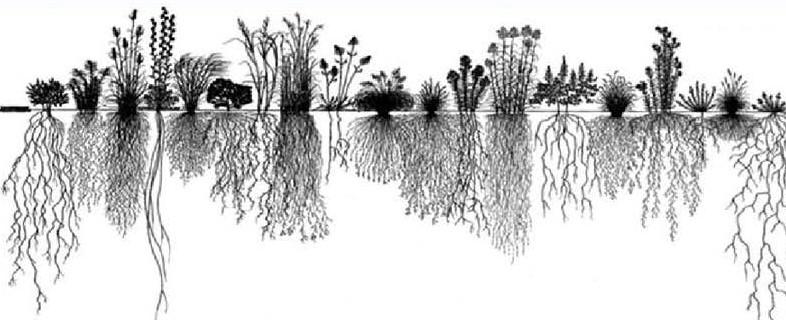
Figure Above: The root systems of different prairie plants. Modified from United States Department of Agriculture-Illinois native plant guide, by ResearchGate, retrieved from https://www.researchgate.net/figure/The-root-systems-of-different-prairie-plants-Modified-fromUnited-States-Department-of_fig3_40730903.
Stop Five – Stream Next to the Ski Shop Building
Topic: Watershed
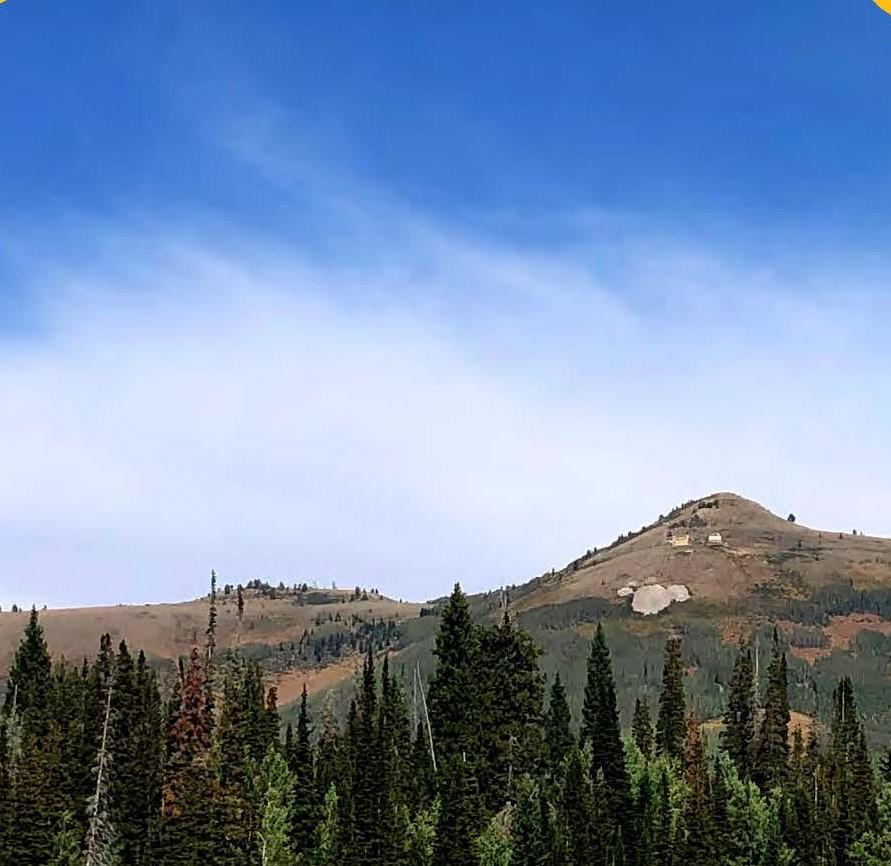 The water in the canyons fills a few niches. For us, the water here is our drinking water! Think about how many times you have used water today. Did you brush your teeth? Did you flush the toilet? All of those activities use water! Remember at Snowbird when we used the map to see if we were in a protected watershed? The reason why Big and Little Cottonwood Canyons are protected is because it is our drinking water down in the Salt Lake Valley. Without the water that the canyons provide, people might not be able to survive here in Salt Lake City. Salt Lake City is considered a high desert, which means that it is a location that does not receive a lot of water. We need to follow the rules to keep our water clean and healthy for all of us to use. For instance, there are no dogs and no swimming allowed in the Canyons.
The water in the canyons fills a few niches. For us, the water here is our drinking water! Think about how many times you have used water today. Did you brush your teeth? Did you flush the toilet? All of those activities use water! Remember at Snowbird when we used the map to see if we were in a protected watershed? The reason why Big and Little Cottonwood Canyons are protected is because it is our drinking water down in the Salt Lake Valley. Without the water that the canyons provide, people might not be able to survive here in Salt Lake City. Salt Lake City is considered a high desert, which means that it is a location that does not receive a lot of water. We need to follow the rules to keep our water clean and healthy for all of us to use. For instance, there are no dogs and no swimming allowed in the Canyons.
Bonus: How long do you think it takes for the water you see here in the stream to end up in your tap at home? The answer is: Between 12 and 24 hours!
Is the water here in the canyon saltwater or freshwater? (Hint: what kind of water comes out of your tap at home? Is it salty or not?). Out of all the water on Earth, only about 3% of it is freshwater, which means that only a little bit of the water on Earth is available for us to use. Of that water, some of it is frozen in glaciers, suspended in the atmosphere, stored too deep underground, or is too polluted for us to use. Really, the amount of water that we can use is less than 0.5% of all the water on Earth. The freshwater we have here in the canyons is a precious resource that we need to take care of. What are some ways that we can use less water in our day-to-day lives?
To investigate the amount of freshwater and saltwater on Earth, check out Utah State University Water Quality Extension’s A Drop in the Bucket Activity!
Post Activity
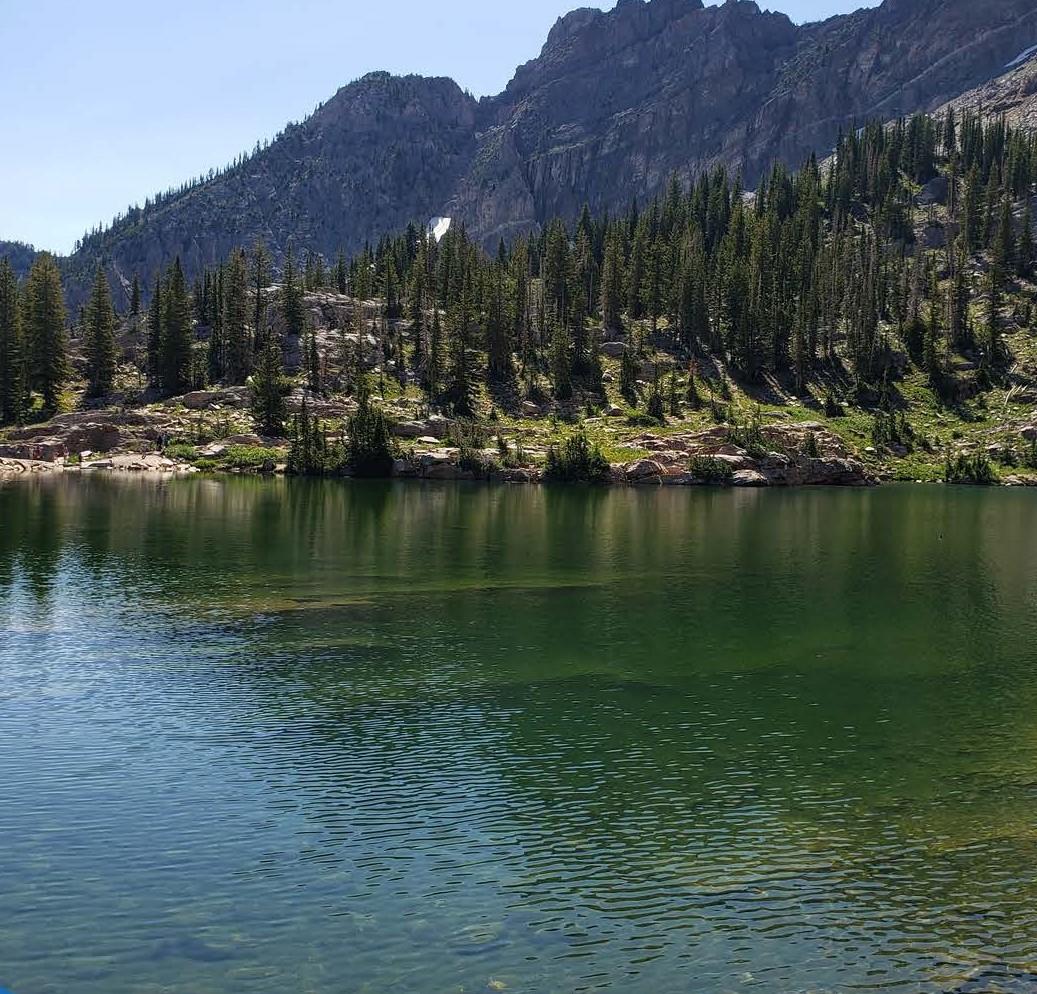 Understanding an animal’s role in the environment can help us appreciate it in new ways. Think of an animal or plant that might not be your favorite. Write down how you feel about it and why. Now think of a few roles it plays in the environment. Lastly, look back at how you originally felt about this organism, has your opinion changed or shifted? Why or why not?
Understanding an animal’s role in the environment can help us appreciate it in new ways. Think of an animal or plant that might not be your favorite. Write down how you feel about it and why. Now think of a few roles it plays in the environment. Lastly, look back at how you originally felt about this organism, has your opinion changed or shifted? Why or why not?

